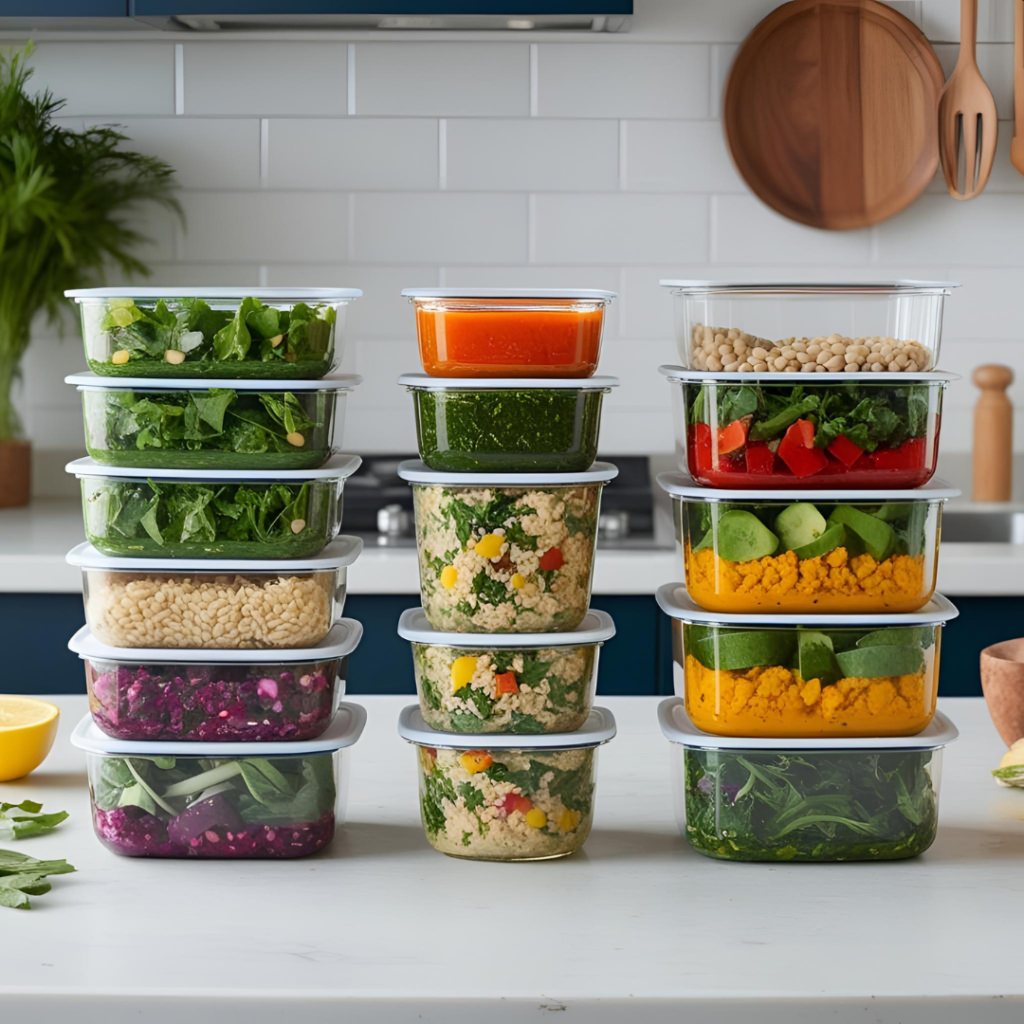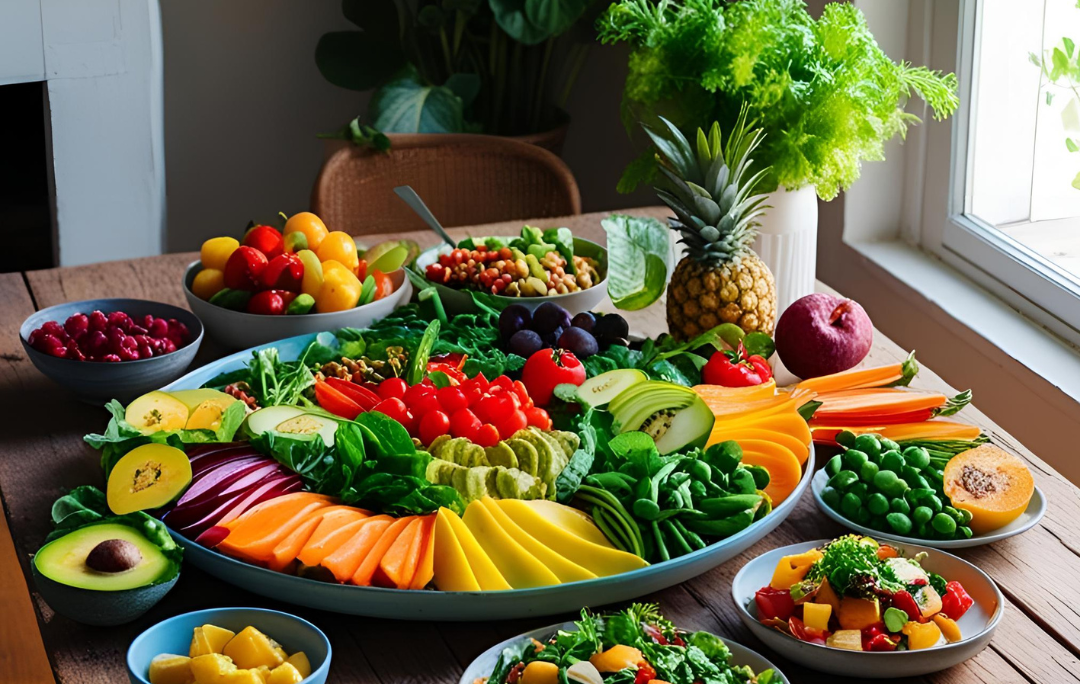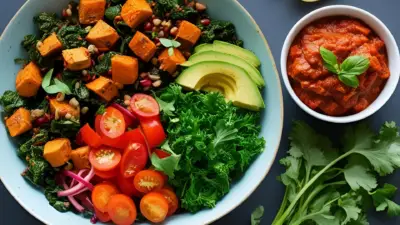Discover how switching to plant-based foods can help you shed pounds, boost energy, and add years to your life – all while enjoying delicious meals you’ll actually crave.
Introduction: The Plant-Based Diet
Revolution
Have you ever wondered why some people seem to maintain their ideal weight effortlessly while enjoying their meals? The secret might be simpler than you think. Plant-based eating isn’t just another diet trend – it’s a scientifically backed approach to sustainable weight management and overall wellness that’s transforming lives across America.
Recent studies show that people who follow plant-based diets weigh, on average, 15% less than their meat-eating counterparts. But the benefits extend far beyond the scale. From improved digestion to enhanced mental clarity, the power of plants is revolutionizing how we think about nutrition and weight loss.
In this comprehensive guide, we’ll explore why plant-based eating might be the missing piece in your wellness journey and how to make the transition seamlessly – without feeling deprived or overwhelmed.
Contents
- What Exactly Is a Plant-Based Diet?
- The Science-Backed Weight Loss Benefits
- Beyond Weight Loss: The Full-Body Benefits
- Practical Tips for Starting Your Plant-Based Diet Journey
- Common Concerns and Misconceptions
- Sample 3-Day Meal Plan to Get Started
- Conclusion: A Sustainable Approach to Lifelong Health
What Exactly Is a Plant-Based Diet?
A plant-based diet focuses primarily on foods derived from plants: vegetables, fruits, whole grains, legumes, nuts, and seeds. Unlike strict veganism, many plant-based eaters adopt a flexible approach, with plant foods making up 80-90% of their diet while occasionally incorporating small amounts of animal products.
The key difference between plant-based eating and other diets? It’s not about restriction but rather abundance – emphasizing whole, minimally processed foods that nourish your body and satisfy hunger naturally.
Types of plant-based approaches include:
- Flexitarian: Primarily plant-based with occasional meat consumption
- Pescatarian: Plant-based plus seafood
- Vegetarian: Plant-based plus dairy and eggs
- Vegan: Exclusively plant-based, avoiding all animal products
Regardless of which variation you choose, the fundamental principle remains: making plants the star of your plate transforms your health from the inside out.
The Science-Backed Weight Loss Benefits
The evidence supporting plant-based eating for weight management is compelling. A meta-analysis published in the Journal of the Academy of Nutrition and Dietetics reviewing 12 randomized controlled trials found that participants following plant-based diets lost significantly more weight than those on conventional diets – even without explicit calorie restrictions.
Why does plant-based eating work so effectively for weight loss?
1. Natural Calorie Control
Plant foods are naturally lower in calories while being higher in volume than animal products. This means you can eat satisfying portions while consuming fewer calories overall. For example, one pound of vegetables contains approximately 100 calories, while one pound of beef contains about 1,100 calories.
2. Fiber-Rich Satisfaction
Plants are packed with fiber – something completely absent in animal foods. Fiber slows digestion, stabilizes blood sugar, and promotes feelings of fullness. Studies show that increasing fiber intake by just 14 grams per day is associated with a 10% decrease in calorie consumption and 4.2 pounds of weight loss over time, without making any other dietary changes.
3. Improved Gut Microbiome
Your gut bacteria play a crucial role in weight management. Plant-based diets promote a diverse and healthy gut microbiome, which research increasingly links to maintaining a healthy weight. The prebiotic fiber in plant foods feeds beneficial bacteria that help regulate metabolism and reduce inflammation.
4. Reduced Inflammatory Response
Animal products often promote inflammation in the body, which is associated with weight gain and difficulty losing weight. Plant foods, rich in antioxidants and phytonutrients, combat inflammation, helping your body function optimally and making weight loss more achievable.
Beyond Weight Loss: The Full-Body Benefits
While shedding unwanted pounds is often the initial motivation for trying plant-based eating, many people discover that the benefits extend far beyond weight loss:
Enhanced Energy Levels
Plant foods are rich in complex carbohydrates that provide sustained energy throughout the day, eliminating the mid-afternoon crashes that often lead to unhealthy snacking. Many people report significant improvements in energy within just 2-3 weeks of adopting a plant-centered approach.
Clearer Skin and Brighter Complexion
The abundance of vitamins, minerals, and antioxidants in plant foods nourishes your skin from within. Additionally, eliminating dairy products – which have been linked to acne and inflammation – often results in a clearer, more radiant complexion.
Improved Digestive Health
The high fiber content in plant foods promotes regular bowel movements and a healthy digestive system. Many people find that bloating, constipation, and other digestive complaints resolve naturally with a plant-based approach.
Better Heart Health
Plant-based diets have been shown to reduce blood pressure, lower cholesterol levels, and decrease the risk of heart disease by up to 25%. These cardiovascular improvements often begin within weeks of making the dietary shift.
Reduced Risk of Chronic Disease
Research consistently shows that plant-predominant diets are associated with lower rates of type 2 diabetes, certain cancers, and cognitive decline. By focusing on plant foods, you’re not just losing weight – you’re investing in your long-term health.
Practical Tips for Starting Your Plant-Based Diet Journey
Transitioning to plant-based eating doesn’t have to be an all-or-nothing approach. These simple strategies can help you ease into this lifestyle successfully:
1. Start With One Plant-Based Diet Day Per Week
Begin with “Meatless Monday” and gradually increase the number of plant-based days as you become more comfortable with new recipes and foods.
2. Follow the “Plate Method”
Aim to fill half your plate with non-starchy vegetables, one quarter with whole grains or starchy vegetables, and one quarter with plant-based protein (beans, lentils, tofu) or a small portion of animal protein if you’re taking a flexitarian approach.
3. Focus on Addition, Not Subtraction
Instead of obsessing over what you’re eliminating, concentrate on adding more plant foods to each meal. Over time, they’ll naturally crowd out less nutritious options.
4. Keep Convenient Options Available
Stock your kitchen with easy plant-based staples like:
- Pre-cut vegetables and fruit
- Canned beans and lentils
- Frozen vegetables and fruits
- Whole grains like quinoa, brown rice, and oats
- Nuts, seeds, and nut butters
5. Reimagine Your Favorites
Rather than giving up beloved dishes, learn to make plant-based versions of your favorites – like lentil and vegetable soup, spicy chickpea and sweet potato bowl, or black bean burgers.
Common Concerns and Misconceptions
“Will I Get Enough Protein?”
This is perhaps the most common concern about plant-based eating. The reality? Most Americans consume far more protein than they need, and plant foods provide ample protein when eaten in sufficient variety and quantity. Excellent plant protein sources include:
- Legumes: beans, lentils, peas, peanuts
- Soy products: tofu, tempeh, edamame
- Seitan (wheat protein)
- Quinoa and other whole grains
- Nuts and seeds
“Isn’t Plant-Based Eating Expensive?”
While specialty plant-based products can be pricey, a diet centered on whole plant foods is typically less expensive than one heavy in animal products. Beans, rice, potatoes, and seasonal produce are among the most economical foods available.
“What About Eating Out and Social Situations?”
Most restaurants now offer plant-based options, and the availability continues to expand. When dining with others, focus on side dishes if necessary, eat something small beforehand, or offer to bring a dish to share that aligns with your preferences.

Sample 3-Day Meal Plan to Get Started
Day 1
Breakfast: Overnight oats with berries, ground flaxseed, and almond butter
Lunch: Plant-based Buddha bowl with quinoa, roasted sweet potatoes, chickpeas, avocado, and tahini dressing
Dinner: Lentil bolognese over whole grain pasta with a side salad
Snack: Apple slices with peanut butter
Day 2
Breakfast: Tofu scramble with peppers, onions, and spinach, served with whole grain toast
Lunch: Hearty vegetable soup with a side of whole grain bread
Dinner: Black bean and sweet potato tacos with avocado and lime
Snack: Handful of mixed nuts and dried fruit
Day 3
Breakfast: Green smoothie with spinach, banana, mango, flax seeds, and plant milk
Lunch: Mediterranean wrap with hummus, roasted vegetables, and mixed greens
Dinner: Chickpea curry with brown rice and steamed broccoli
Snack: Edamame sprinkled with sea salt
Conclusion: A Sustainable Approach to Lifelong Health
The beauty of plant-based eating lies in its flexibility and sustainability. Whether you choose to embrace it fully or simply incorporate more plant foods into your current diet, every step toward a more plant-centered approach brings benefits for your weight, health, and wellbeing.
Unlike restrictive diets that often lead to weight cycling and frustration, plant-based eating offers a path to natural, sustainable weight management while nourishing your body with the nutrients it craves.
Are you ready to experience the transformative effects of adopting a plant-based diet? Start with just one plant-based meal today, and begin your journey toward your healthiest self – inside and out.
Remember: Always consult with a healthcare provider before making significant dietary changes, especially if you have underlying health conditions or take medications.



